Содержание
- 2. The Definition of a Sentence a polyfunctional unit many aspects (facets): - - a grammatical structure
- 3. The Definition of a Sentence absolutely differing types of sentences: one-word sentences E.g. Help! Fire! Women!
- 4. The Definition of a Sentence 50 page-long sentences: Molly Bloom’s unpunctuated monologue from J. Joyce’s “Ulysses”
- 5. The Definition of a Sentence prof. Khaimovich: - a communicative unit - made up of words
- 6. The Definition of a Sentence M.Y. Bloch in his definition attempts to cover all aspects of
- 7. The Definition of a Sentence: M.Y. Bloch a unit of speech, built of words unlike a
- 8. The Definition of a Sentence: M.Y. Bloch intonationally coloured characterized by predicativity possesses a nominative aspect
- 9. Syntactic Modelling of the Sentence representing infinite living structures as a finite set of basic structures,
- 10. Syntactic Modelling of the Sentence associated with transformational grammar (N.Chomsky)
- 11. Syntactic Modelling of the Sentence All possible grammatical structures derivations of kernels, received by transformational rules
- 12. Syntactic Modelling of the Sentence Transformational rules (TR): - addition, - substitution, - deletion, - embedding
- 13. Semantic Modelling of the Sentence generative semantics and semantic syntax Charles Fillmore, Wallace Chafe, Ch. McCauley,
- 14. Semantic Modelling of the Sentence a semantic structure: a mental model of an extralinguistic situation in
- 15. Semantic Modelling of the Sentence 2 parts within a basic structure: a noun + a verb,
- 16. Semantic Modelling of the Sentence W. Chafe: the total human conceptual universe is dichotomized into two
- 17. The Notion of a Syntactic Paradigm a set of syntactic structures - a kernel, invariable -
- 18. Paradigm of the Sentence: the morphological sphere all possible changes of the constituents of the kernel:
- 19. The Morphological Sphere the paradigm includes the changes in nouns as to number and case; in
- 20. The Syntactical Sphere phrase-transforms of kernels by the TP of phrasalization E.g. The sun shines =>
- 22. Structural Classification of Simple Sentences classifications of a simple sentence: structural communicative_ semantic pragmatic declarative interrogative
- 23. Structural Classification of Simple Sentences a monopredicative unit one explicit predicative line formally expressed by a
- 24. Structural Classification of Simple Sentences one-member two-member single-nucleus double-nucleus one-axis two-axis 1. Nominal (nounal and adjectival):
- 25. Structural Classification of Simple Sentences Extended sentences carry the main parts ( a subject and a
- 26. Structural Classification of Simple Sentences implicit predicative lines formally unexpressed distinguishable transformationally E.g. I am amazed
- 27. Structural Classification of Simple Sentences Speech is subtler than writing actual performance fragments of sentences, deviating
- 29. General Properties of a Simple (Two-Member Expanded) Sentence a simple sentence primary elements independent the structural
- 30. Syntactic Ties The primary predicative tie makes a sentence realizes itself in the changes of the
- 31. Immediate Explicit Syntactic Ties The Subordinating Tie an expression of dependence of an adjunct on the
- 32. The coordinating tie establishes syntactically homogeneous elements E.g. The sky was pale and soft. He was
- 33. The appositive tie E.g. King Alfred was a remarkable figure. King is an apposition
- 34. The attributive tie exists between a modifier and a modified word can be transformed into a
- 35. The completive tie exists between an indispensable object and a verb the object completes the meaning
- 36. The attributive completive tie exists between a verb and an adverbial modifier of manner which is
- 37. The introductive tie very loose E.g. Frankly speaking, I don’t know anything about it.
- 38. Syntactic Ties immediate explicit syntactic ties implicit semantic ties revealed transformationally interpreted componentially in terms of
- 39. Implicit Semantic Ties E.g. The flowers stood white and desolate. Flowers stood. Flowers were white. Flowers
- 41. Syntactic Processes The ways of introduction of various dependent elements into the subject-predicate skeleton of a
- 42. Completion consists in adding subjective and objective complements to complete the meanings of transitive verbs of
- 43. Completion E.g. He seemed tired. the element tired is added to the copulative verb seem otherwise
- 44. Completion E.g. I consider him clever. The adjective clever is indispensable the verb consider is that
- 45. Syntactic Processes Extension: adding adverbial modifiers Expansion (enlargement): the amplification of a sentence structure
- 46. Syntactic Processes Modification: adding an attribute to the subject or the object
- 47. Syntactic Processes Contamination (стяжение): fusing elements into a whole which results in a double predicate E.g.
- 48. Syntactic Processes Syncretism: combining two functions within one and the same form E.g. She is not
- 49. Syntactic Processes Ellipsis: omitting a principal or a subordinate element or both which can be restored
- 50. Syntactic Processes: Ellipsis. ! in conversation, ads, newspaper headings where expanded structures are customarily ellipticized
- 51. Syntactic Processes: Ellipsis. structures which produce the impression of being elliptical: E.g. She beautiful! He a
- 52. Syntactic Processes: Ellipsis. O. Jespersen: against the ellipsomania of those grammarians which speak of ellipsis in
- 53. Syntactic Processes: Ellipsis. The surface and deep structures of such sentences do not coincide: E.g. He
- 54. Syntactic Processes Inversion (broadly): placing a part of a sentence into an uncustomary position for it
- 55. Syntactic Processes Narrow inversion: placing the predicate before the subject: E.g. There comes a mournful procession.
- 56. Syntactic Processes Parcellation a new syntactic process, characteristic of the XX-th century syntax a break of
- 57. Syntactic Processes Parcellation E.g. He was interrupted at that point. By me. There is a cloud
- 58. Syntactic Processes Parcellation Any element can be extracted from the maternal structure and turned into an
- 59. Syntactic Processes Parcellation Parcellated elements in any function can be in pre- or post position or
- 60. A simple sentence a grammatical structure: principal and secondary parts a semantic structure: the predicate, arguments
- 61. A Simple Sentence E.g. I opened the door. 1. in grammatical terms: its grammatical structure is
- 62. A Simple Sentence a hierarchy of dependencies in a simple sentence the principal and secondary parts
- 64. The Principal Parts of a Simple Sentence subject and the predicate indispensable
- 65. The Principal Parts of a Simple Sentence: Subject denotes something that is spoken about
- 66. The Principal Parts of a Simple Sentence Subject (6) 1. a group subject (expanded): E.g.Ten minutes
- 67. Subject 4. an impersonal subject: E.g. It rains. 5. a rhematic subject: E.g. A woman entered
- 68. Subject 4. an impersonal subject: E.g. It rains. 5. a rhematic subject: E.g. A woman entered
- 69. The Predicate denotes an action, state or property of the thing expressed by the subject agrees
- 70. The Predicate Simple simple verbal simple nominal infinitival reflexive Compound compound nominal predicates compound modal predicates
- 76. The Secondary Parts of a Simple Sentence. An Object. indispensable (obligatory) is used after verbs of
- 77. The Secondary Parts of a Simple Sentence. An Object. Such verbs are insufficient by themselves, structurally,
- 78. An Object. direct, indirect, prepositional cognate (родственный) ( He smiled a winner’s smile. He lived a
- 79. An Object In the cognate object the verb and the noun, functioning as the object, are
- 80. An Attribute very often merely decorates a sentence, but there are instances when without it a
- 82. Скачать презентацию



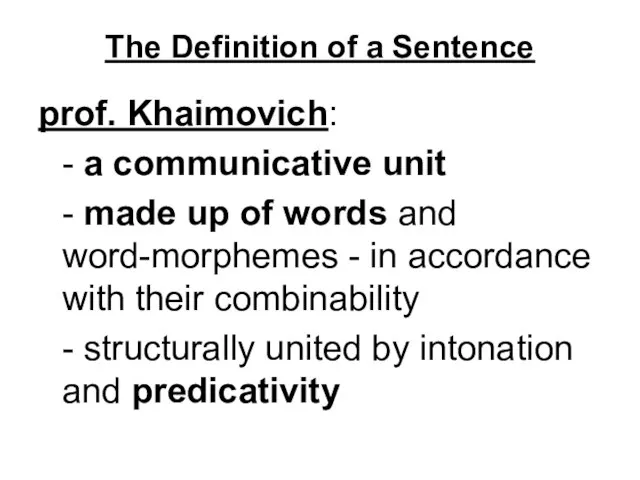
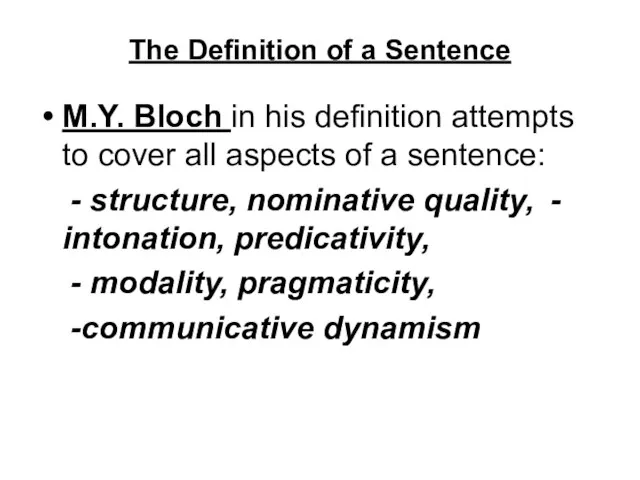
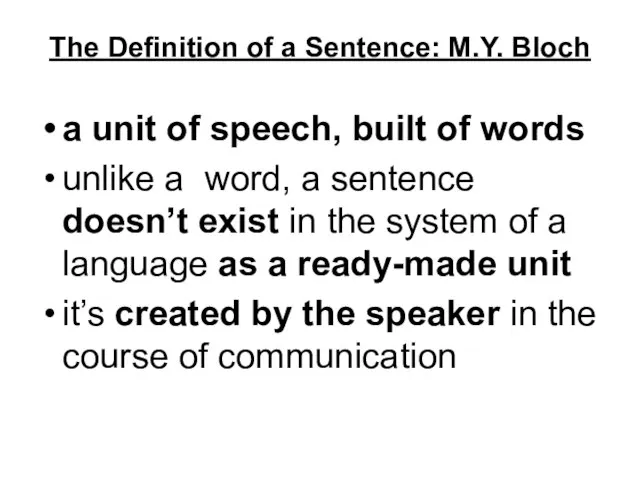
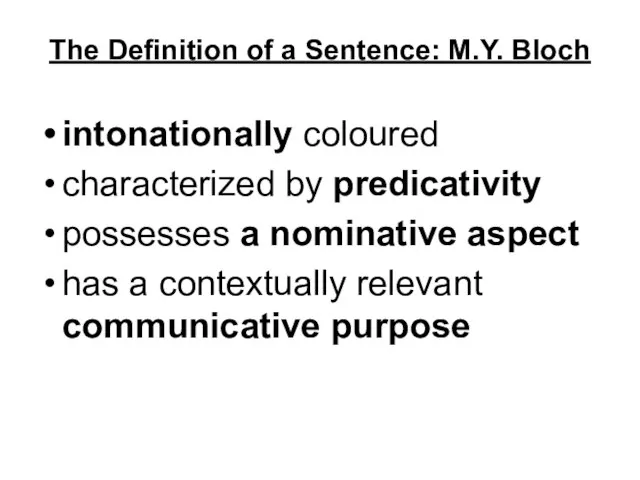
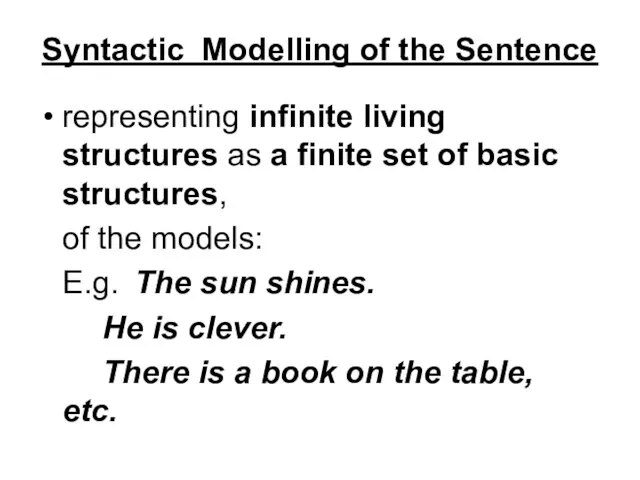
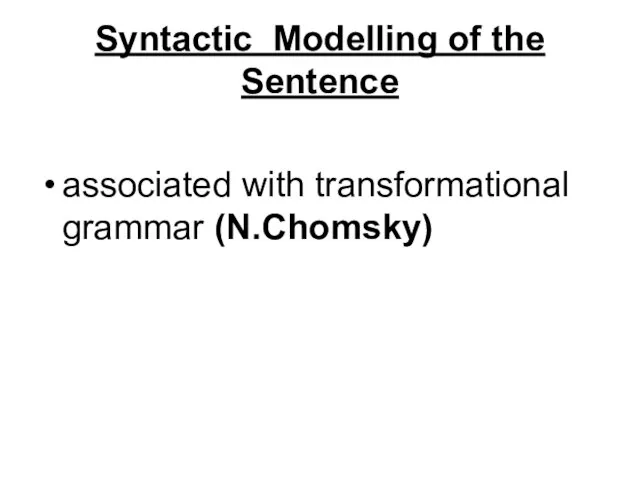
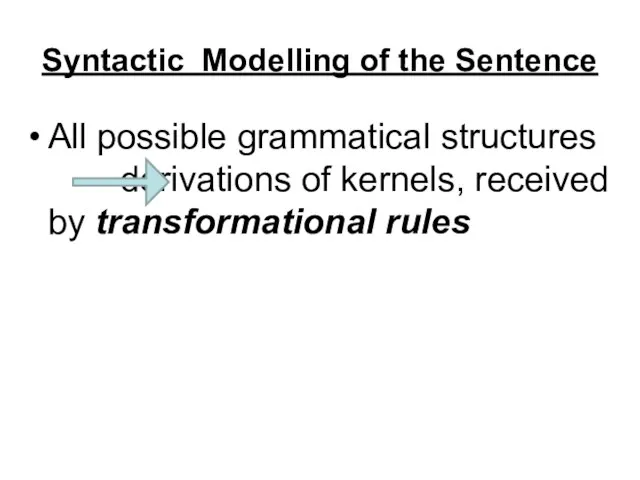
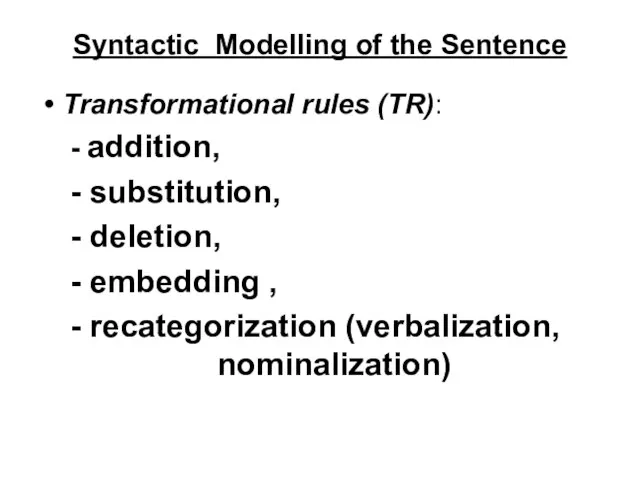
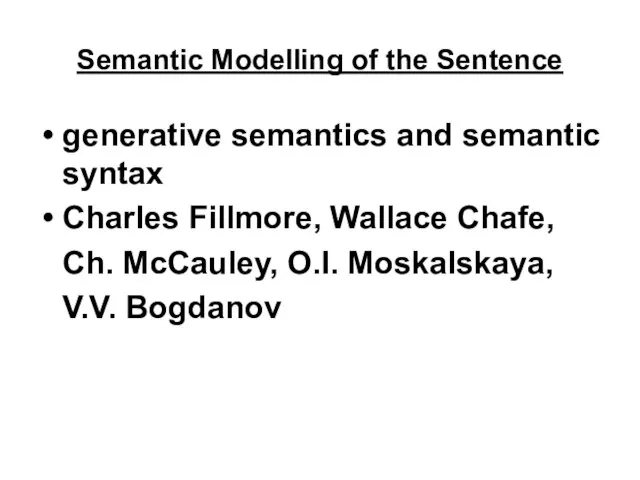
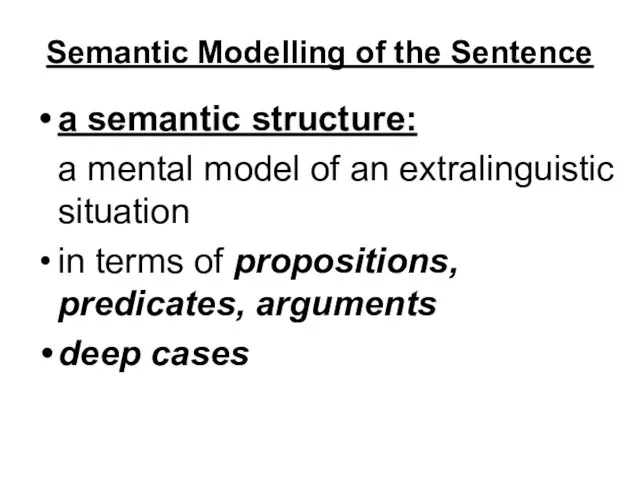
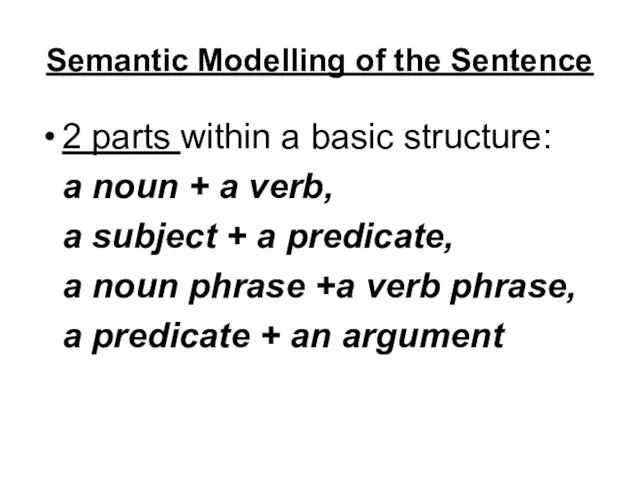
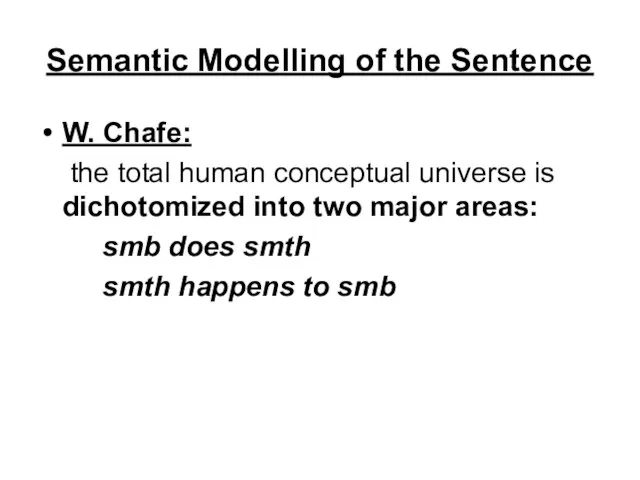
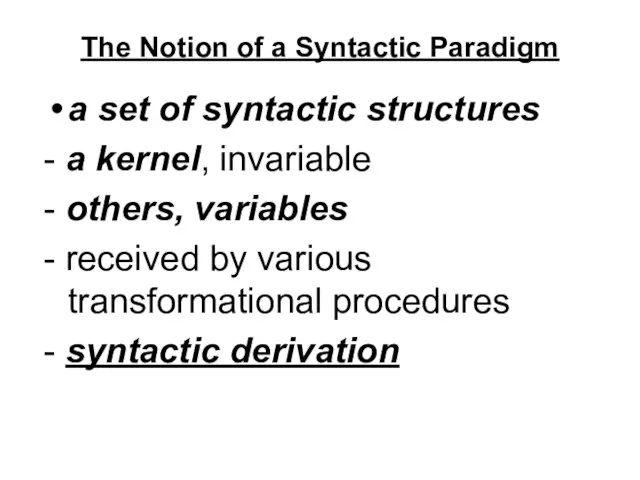
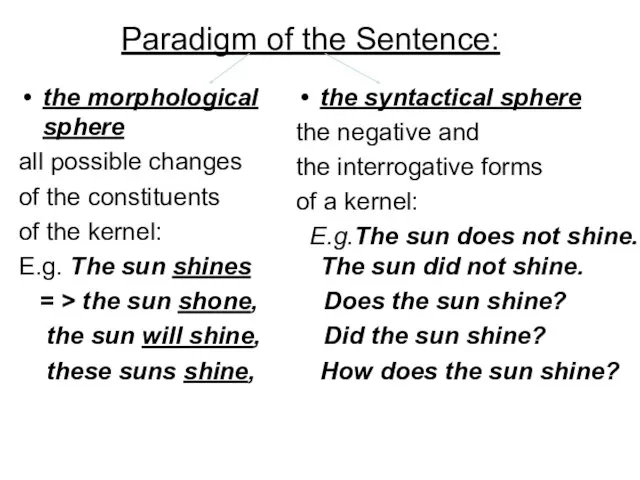
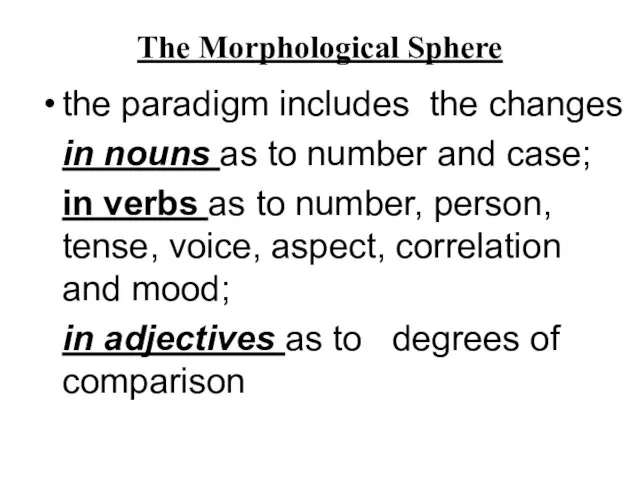
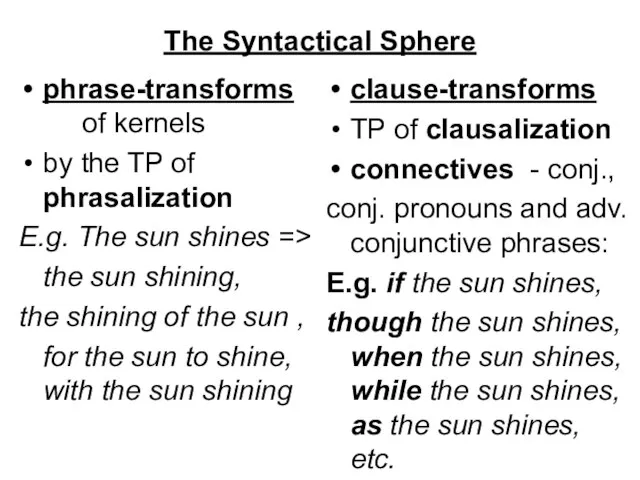

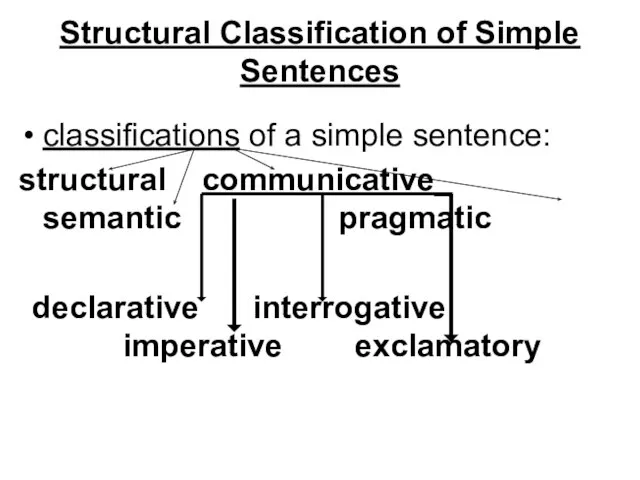
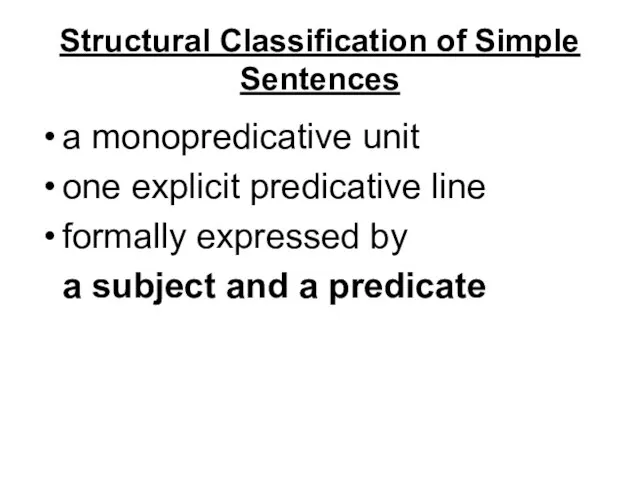
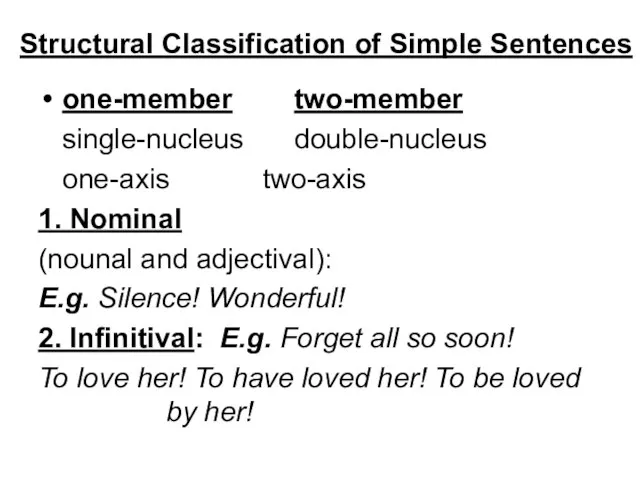
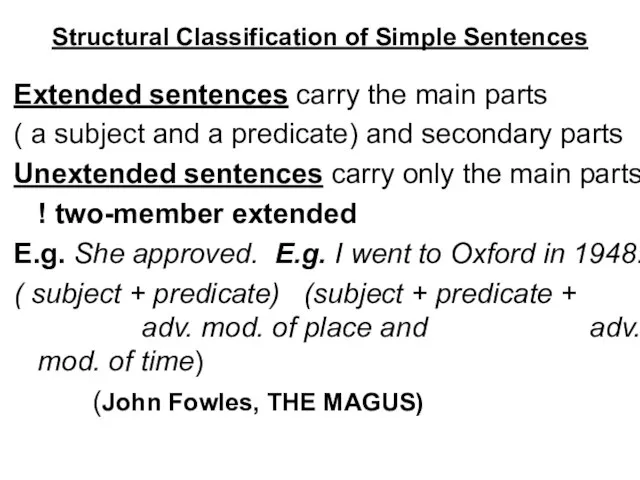
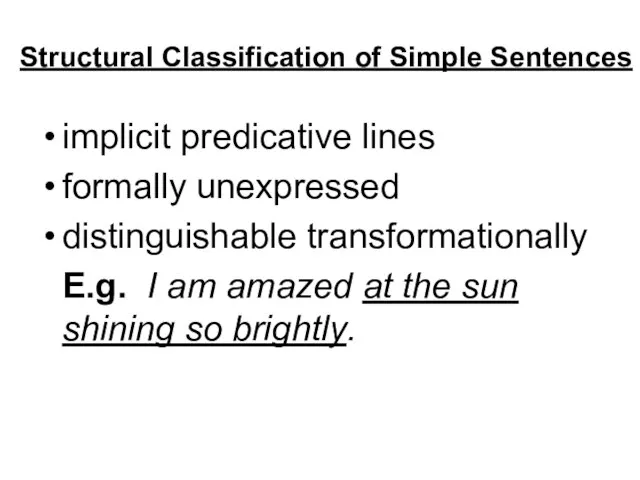
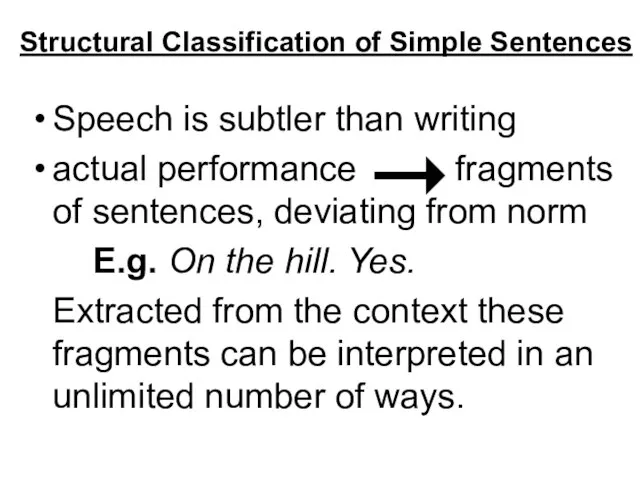

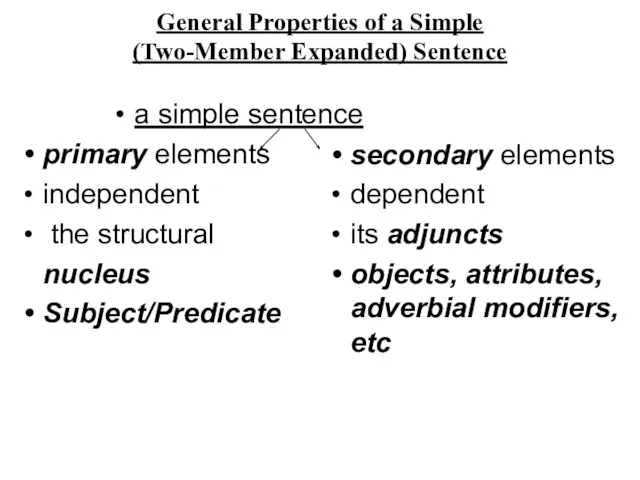
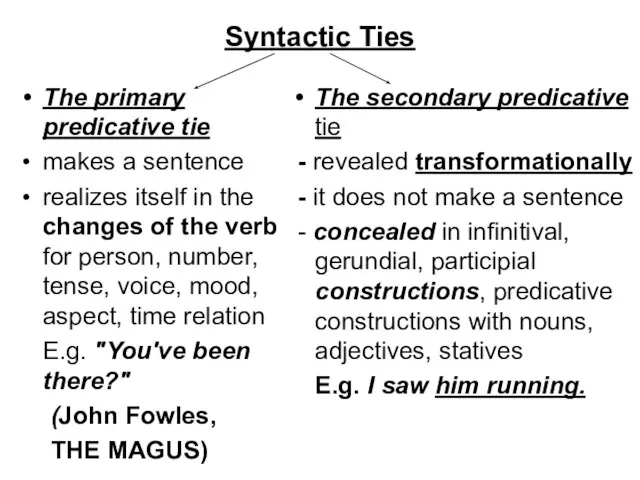
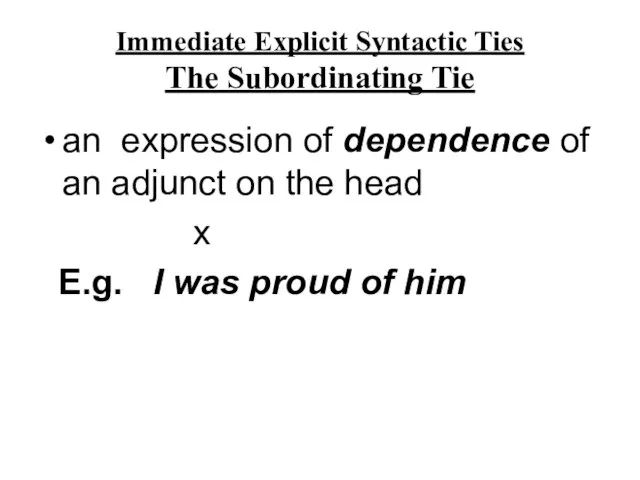
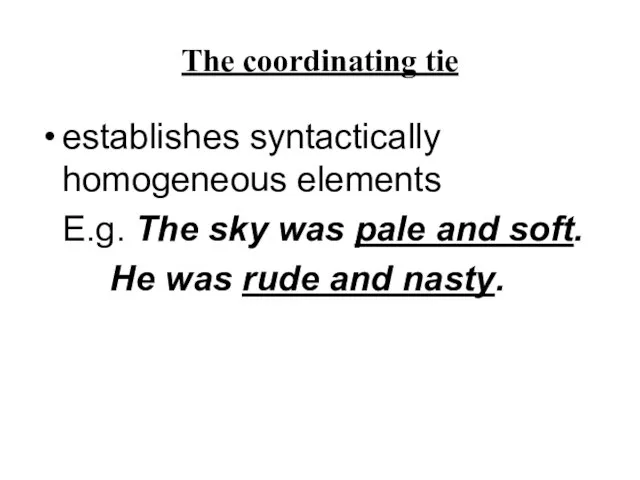
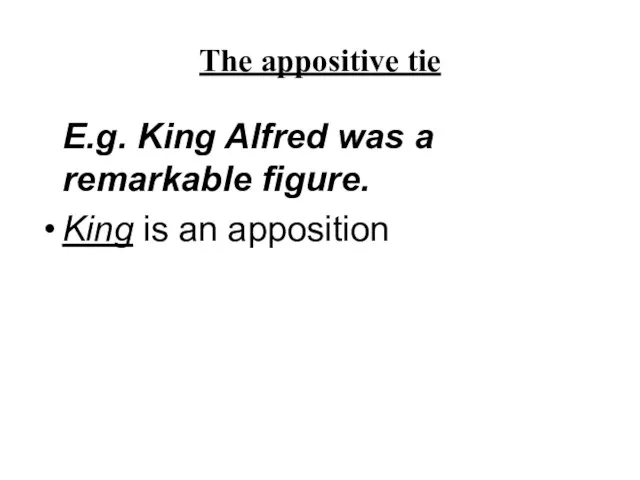
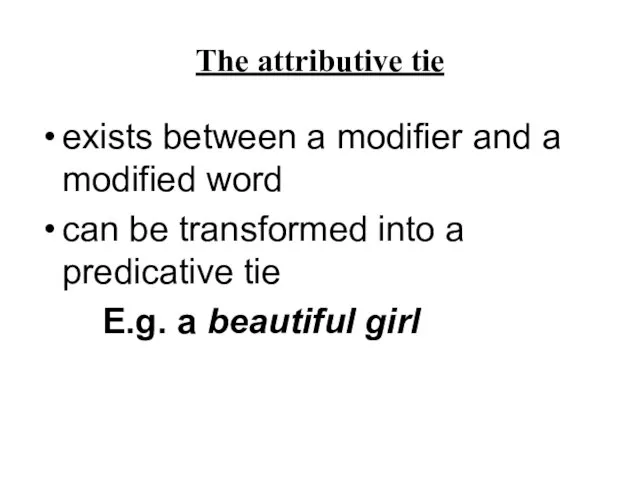
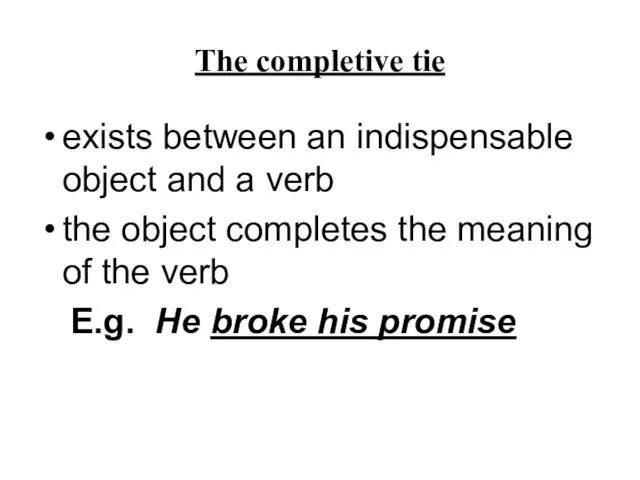
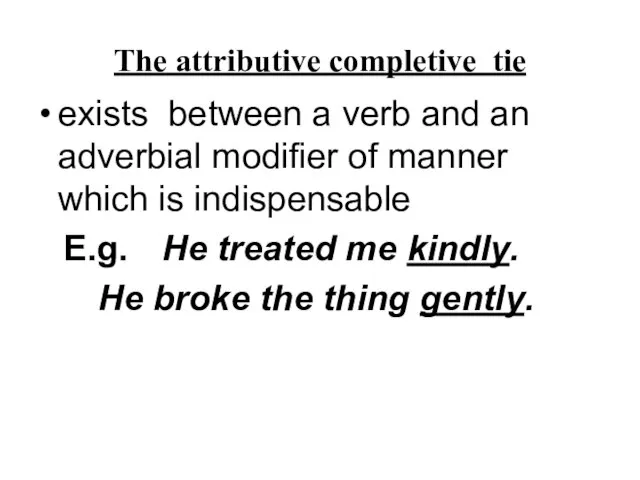
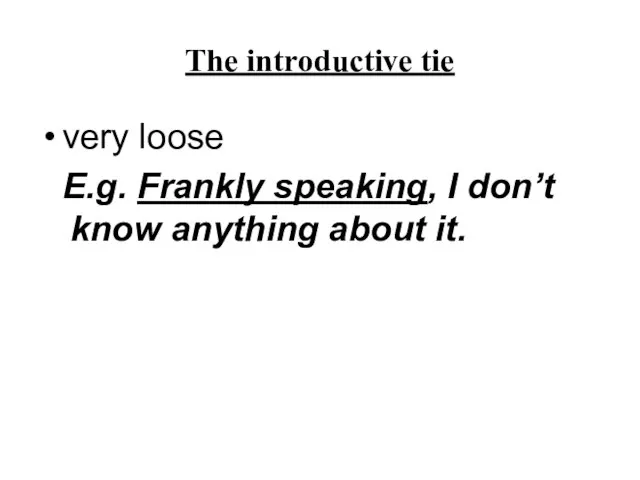
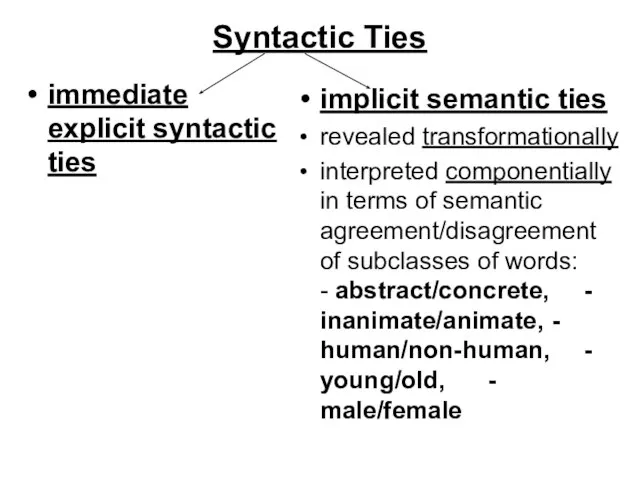
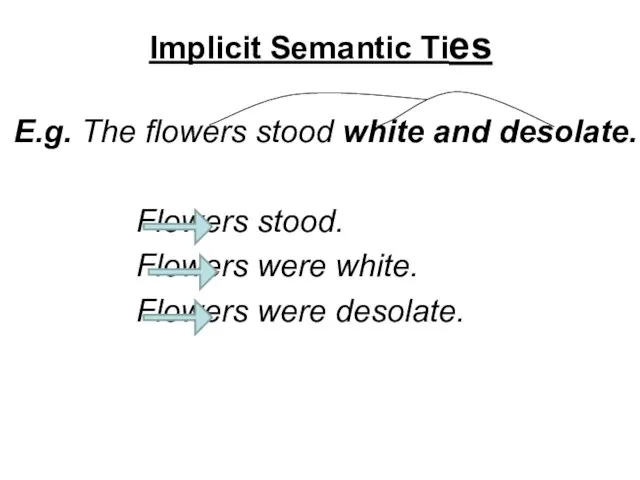

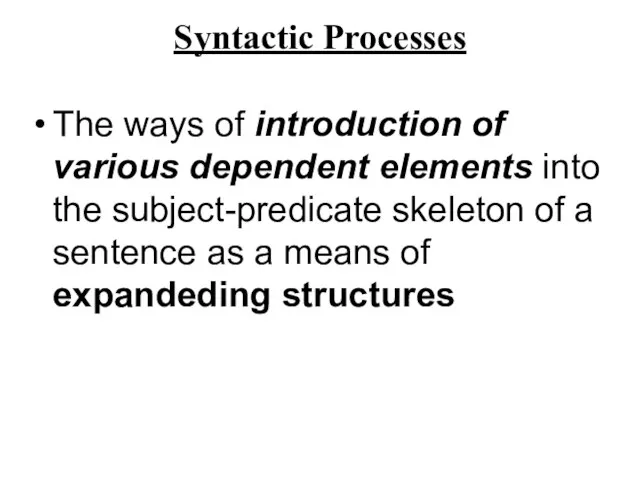
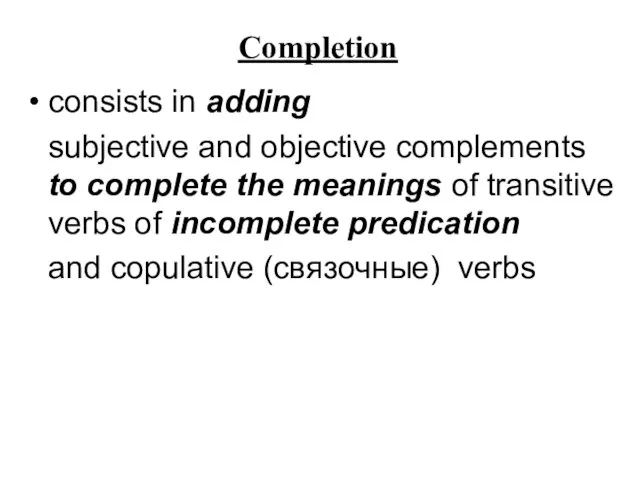
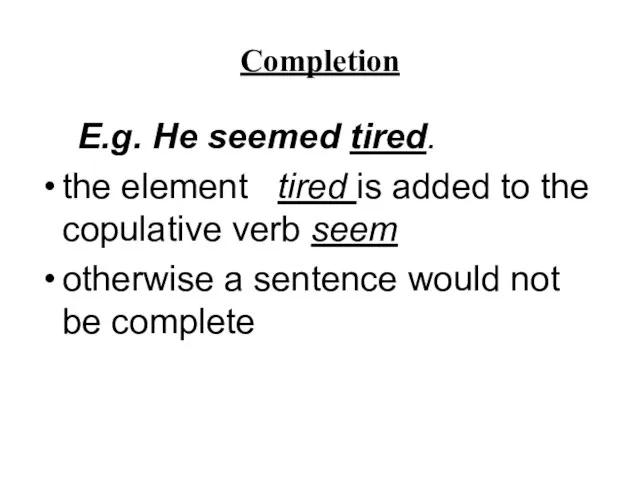
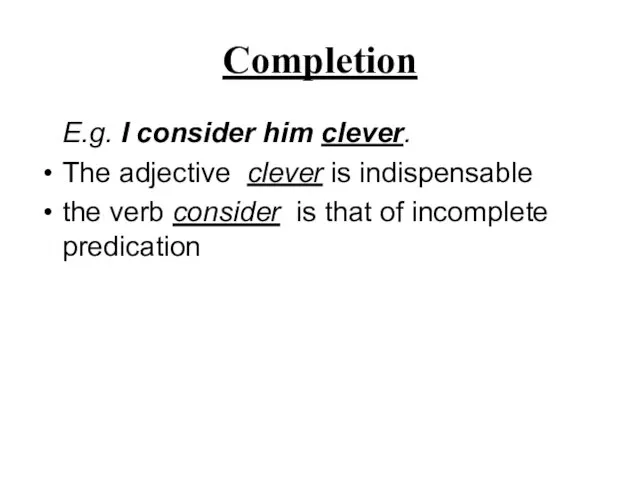
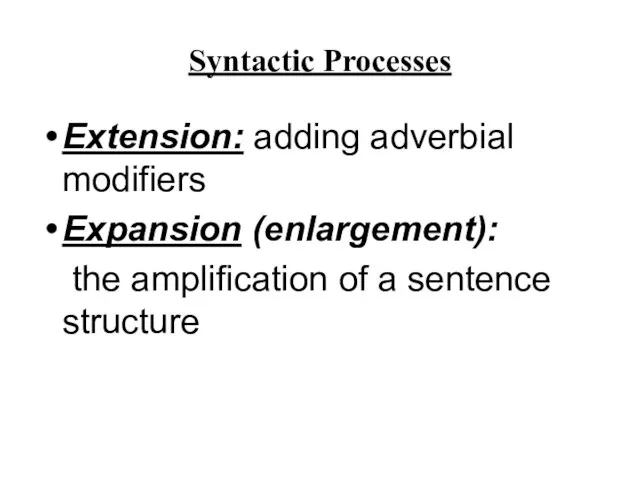
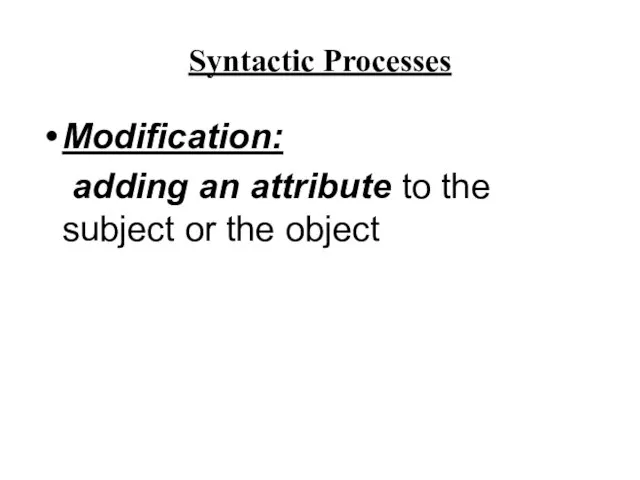
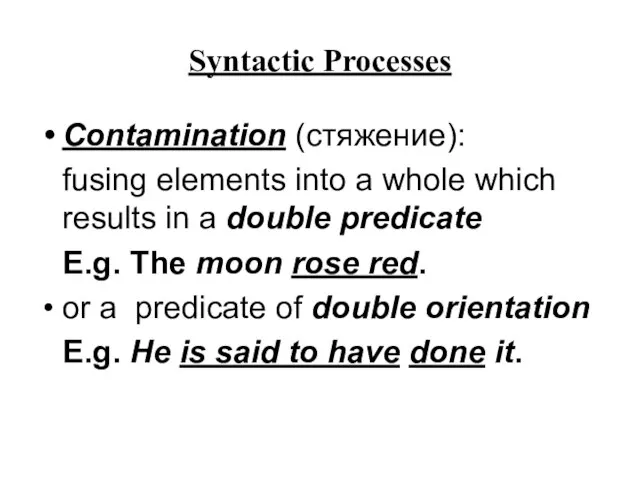
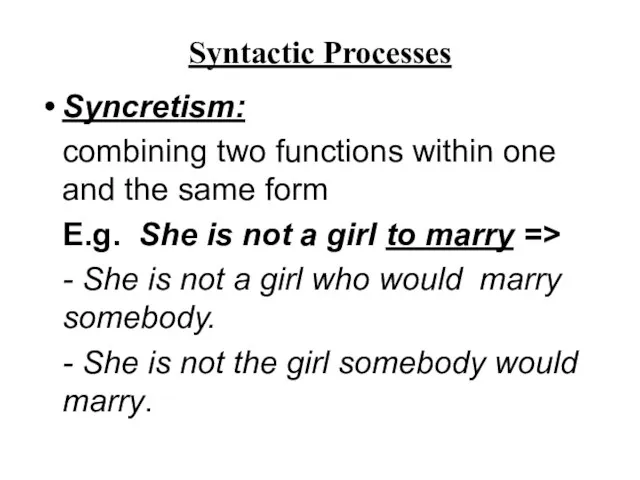
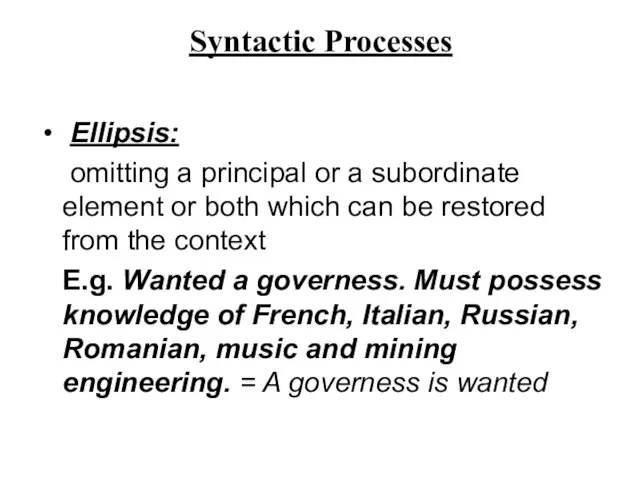
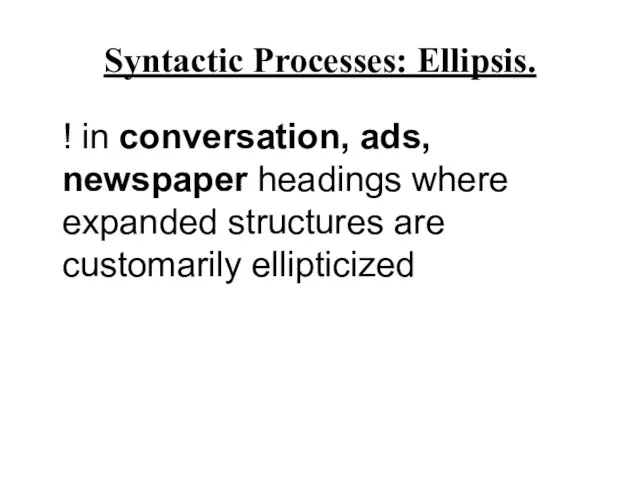
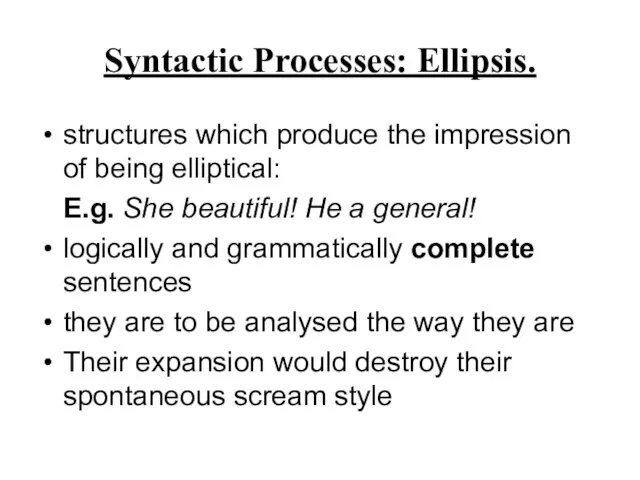
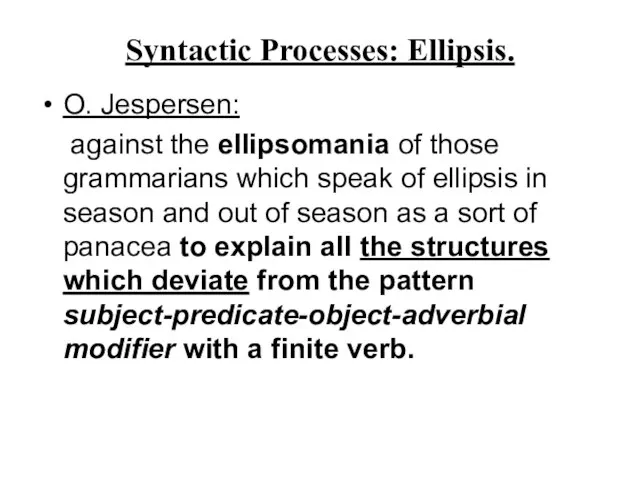
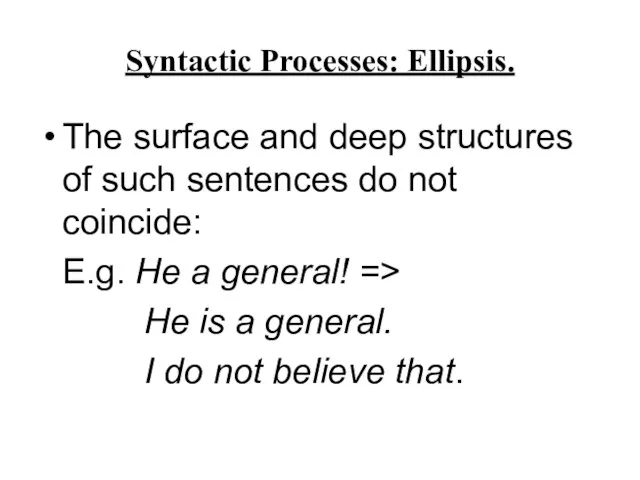
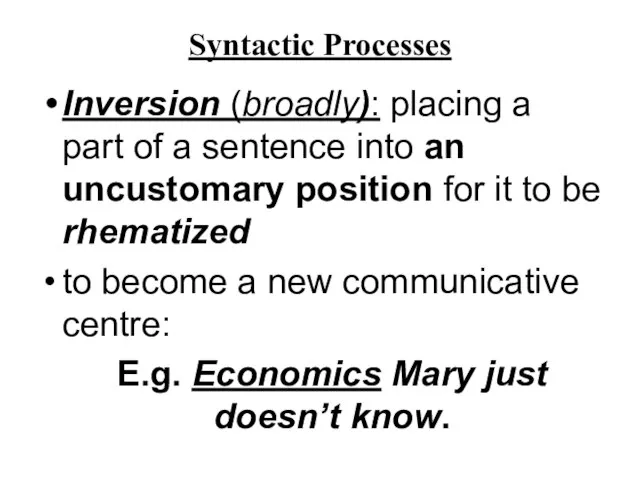
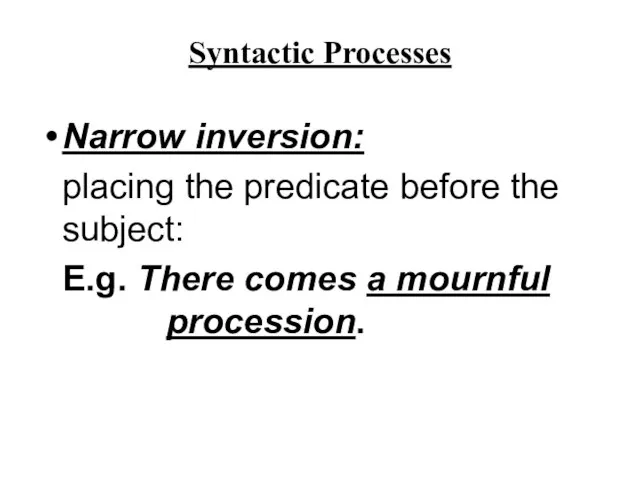
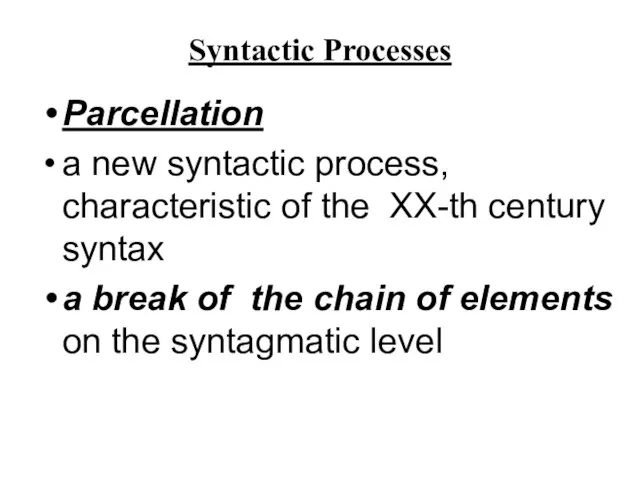
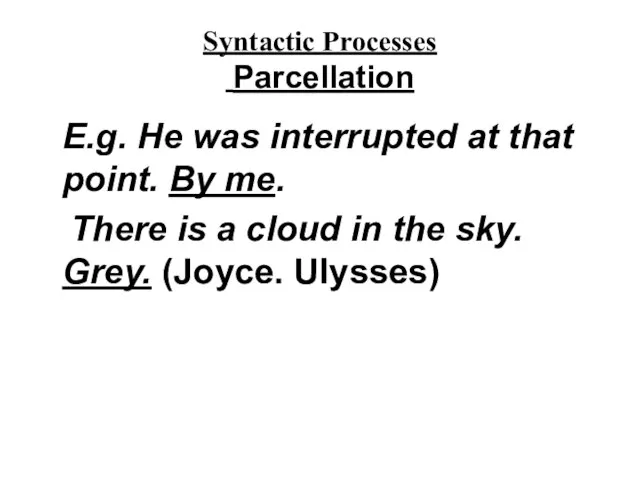
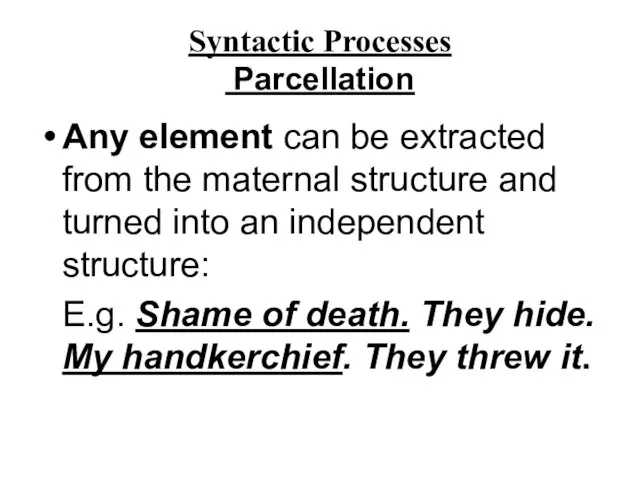
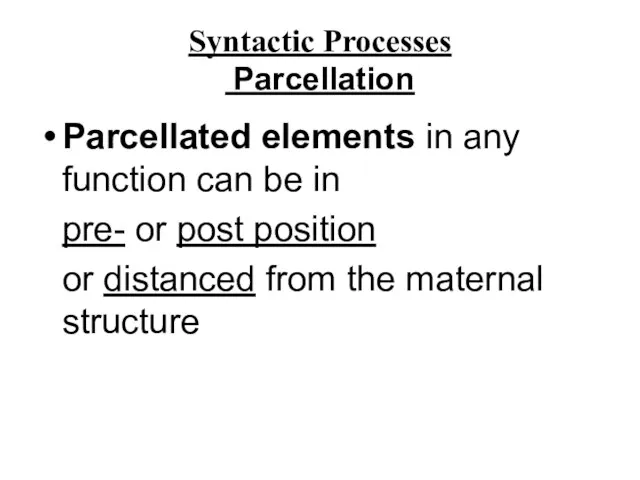
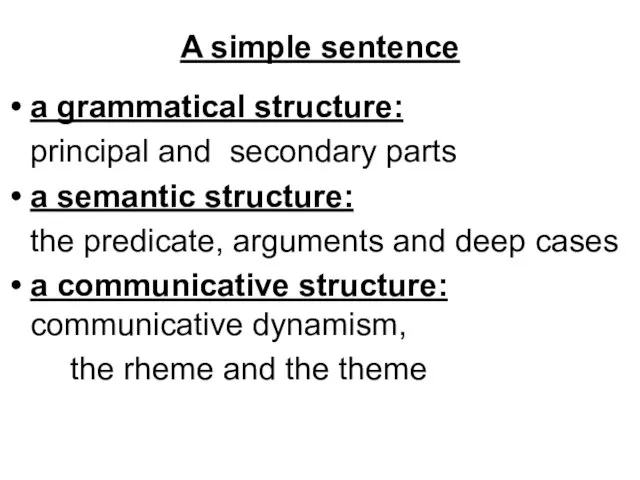
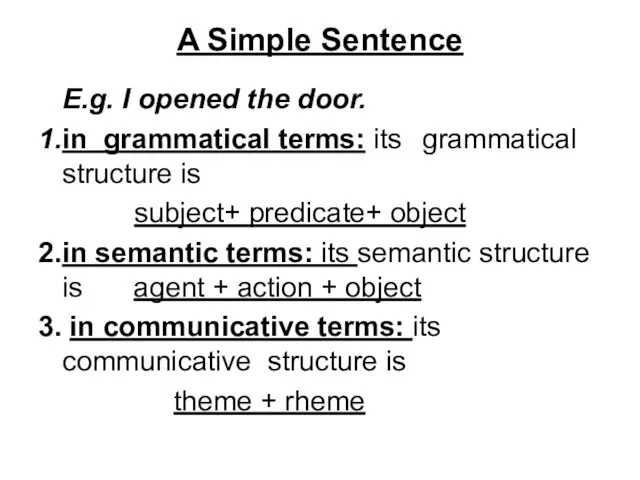
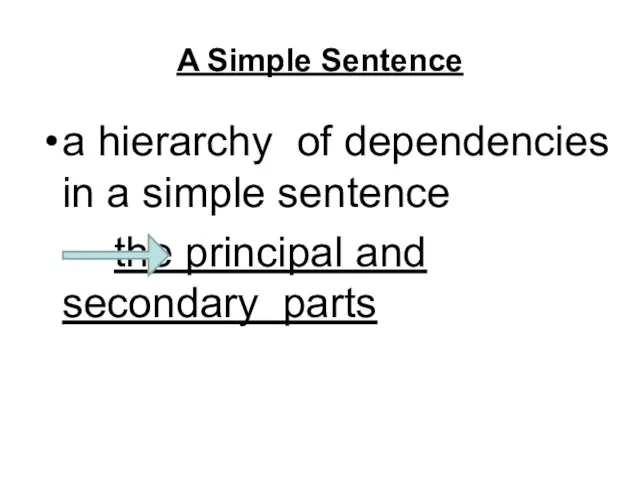

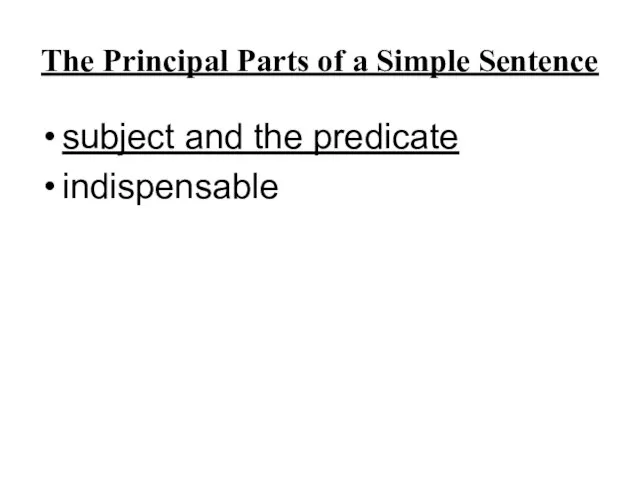
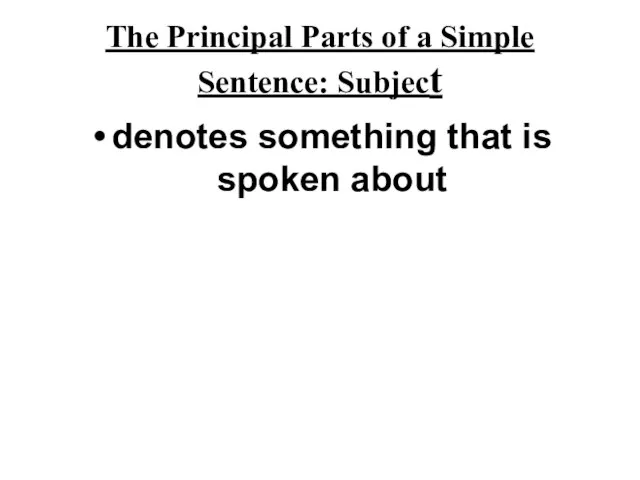
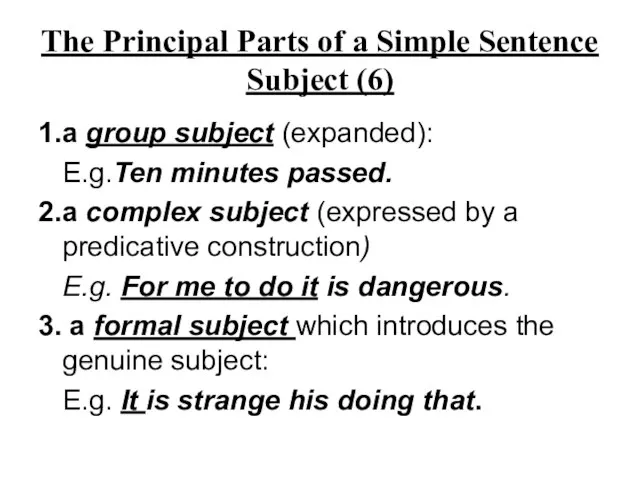
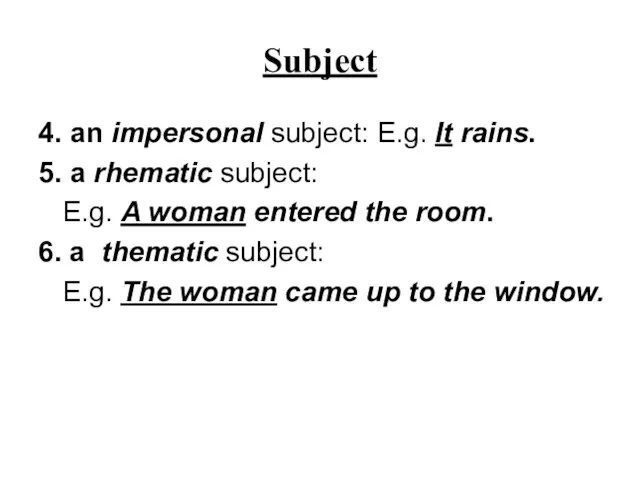
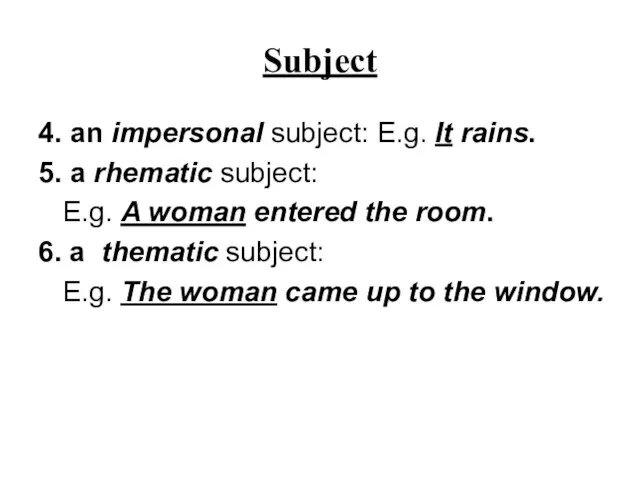
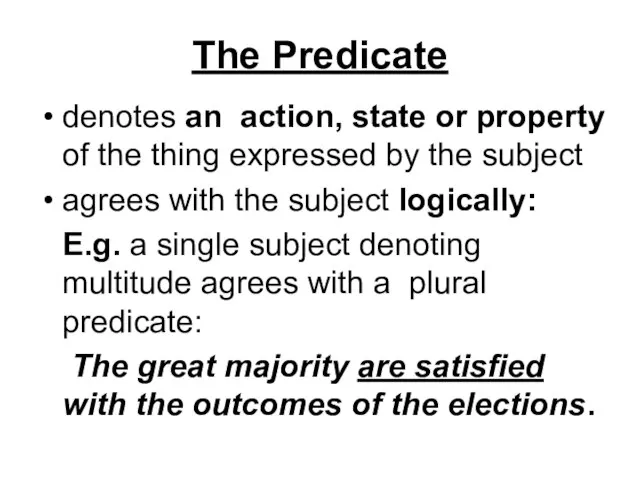
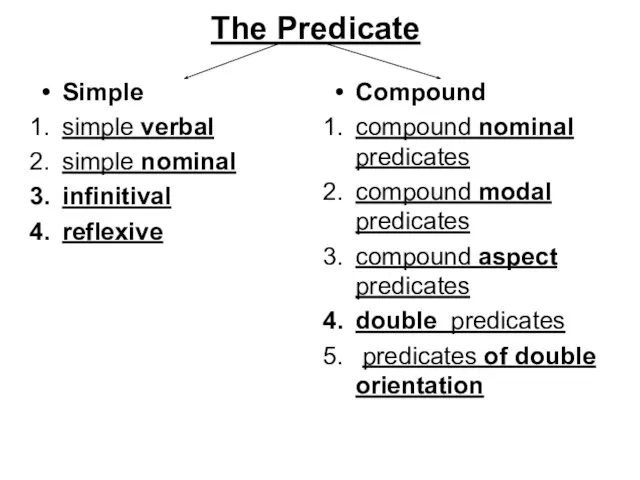





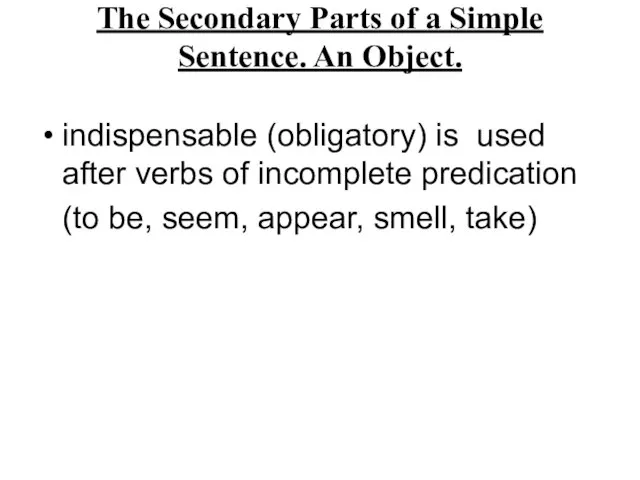
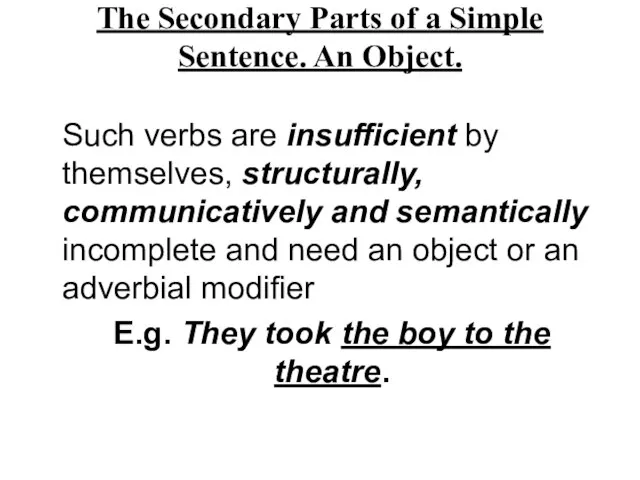
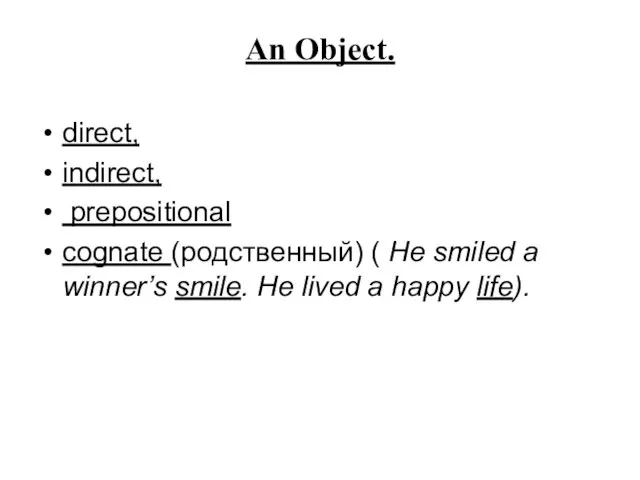
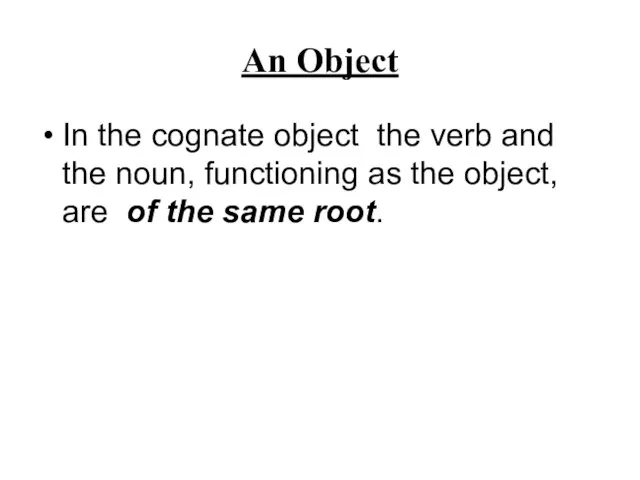
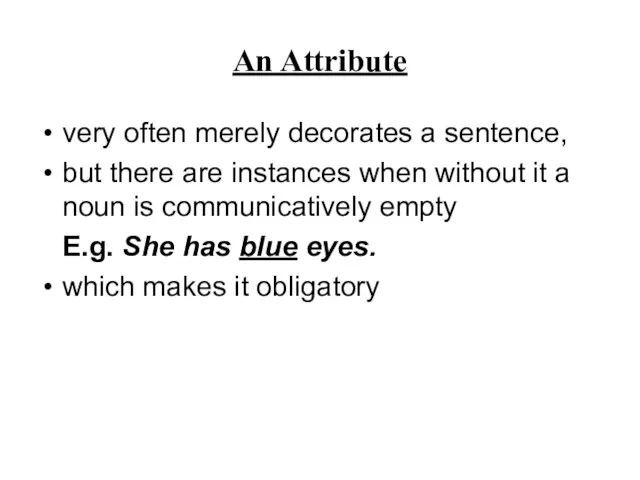
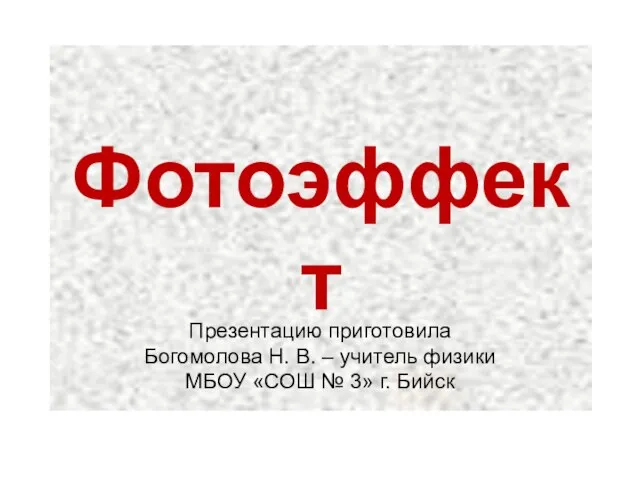 Фотоэффект
Фотоэффект Престижный Университет Франции- Сорбонна.
Престижный Университет Франции- Сорбонна. Здоровье Вашей печени
Здоровье Вашей печени Позновательные процессы
Позновательные процессы Михаил Крючков Руководитель отдела казначейских и дилинговых операций, Компания «Диасофт» Учет фьючерсов и опционов 29 марта 2006 го
Михаил Крючков Руководитель отдела казначейских и дилинговых операций, Компания «Диасофт» Учет фьючерсов и опционов 29 марта 2006 го Основы семейного права
Основы семейного права Шпаргалка юного покупателя
Шпаргалка юного покупателя peri_erke_2
peri_erke_2 Мебель. Модуль А
Мебель. Модуль А ПРАВИЛАОЦЕНКИ УРОВНЯ КОМПЕТЕНЦИЙ СТУДЕНТОВ КАЗНМУ ПО УРОВНЯМ ОБУЧЕНИЯ НА 2011-2012 УЧЕБНЫЙ ГОД
ПРАВИЛАОЦЕНКИ УРОВНЯ КОМПЕТЕНЦИЙ СТУДЕНТОВ КАЗНМУ ПО УРОВНЯМ ОБУЧЕНИЯ НА 2011-2012 УЧЕБНЫЙ ГОД Здоровый город
Здоровый город Развитие интеллектуального капитала организации
Развитие интеллектуального капитала организации Зимние забавы
Зимние забавы Влад Масленников
Влад Масленников Nuclear Physics 2
Nuclear Physics 2 Значение цветов и цветовое воздействие
Значение цветов и цветовое воздействие Презентация на тему Реализация технологий деятельностного типа в начальной школе
Презентация на тему Реализация технологий деятельностного типа в начальной школе Презентация на тему Признаки подобия треугольников
Презентация на тему Признаки подобия треугольников Оценка уровня экономической безопасности региона
Оценка уровня экономической безопасности региона Чистая вода 4 класс
Чистая вода 4 класс МТС – лидер рынка
МТС – лидер рынка Красная шапочка на английском
Красная шапочка на английском Магия чисел в сказках А. С. Пушкина
Магия чисел в сказках А. С. Пушкина Создание религии. Гидризм
Создание религии. Гидризм Интернет для предприятия
Интернет для предприятия geography_rec
geography_rec Основы риторики и теории аргументации
Основы риторики и теории аргументации Расстрелянное слово
Расстрелянное слово